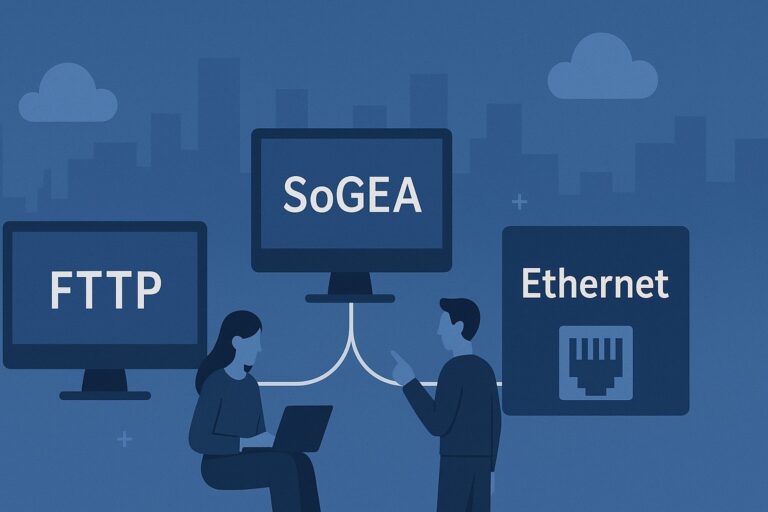Are you looking to enhance the communication and flexibility of your Angular applications? Look no further than Angular 15 EventEmitter! This powerful feature allows you to define and emit custom events within your Angular components, enabling seamless communication between different parts of your application.
With Angular EventEmitter, you can easily implement event-driven communication, making your application more modular and easier to maintain.
In this article, we will dive into the basics of Angular EventEmitters, starting with how to define and emit custom events in your components. We will then explore how to subscribe to these events and implement event-driven communication between components.
Additionally, we will discuss best practices for using Angular EventEmitters in your application, ensuring that you get the most out of this powerful feature.
So, let’s get started and unlock the full potential of Angular 15 EventEmitter for your applications!
Table of Contents
ToggleUnderstanding the Basics of Angular EventEmitters
Now, let’s dive into the basics of Angular’s EventEmitter and understand how you can use it to create and emit custom events within your application.
The EventEmitter in Angular is a powerful tool that allows you to communicate between components by creating and emitting custom events. It works on the publish-subscribe pattern, where a component can emit an event and other components can subscribe to that event and react accordingly.
One of the main use cases of the EventEmitter is passing data between parent and child components. By using the EventEmitter, you can easily pass data from the parent component to the child component. The parent component can emit an event with the data as a payload, and the child component can subscribe to that event and receive the data. This allows for seamless communication and data flow between components, making your application more dynamic and interactive.
To pass data through an EventEmitter, you simply need to emit an event with the data as a parameter. The subscribed component can then access this data and use it as needed. This makes it easy to update the child component based on changes in the parent component, or vice versa. The EventEmitter simplifies the process of passing data between components, reducing the need for complex data sharing mechanisms.
The EventEmitter in Angular is a powerful tool that allows you to create and emit custom events within your application. It simplifies the process of passing data between components, making your application more dynamic and interactive. By using the EventEmitter, you can easily communicate between parent and child components, passing data seamlessly and updating components based on changes in the application.
Understanding the basics of Angular’s EventEmitter is essential for building robust and efficient Angular applications.
Defining Custom Events in Angular Components
First, let’s dive into how Angular components can create their own unique events, like a conductor orchestrating a symphony.
In Angular, components can define custom events using the EventEmitter class. This class is part of the @angular/core package and allows components to emit events that other components can listen to and react accordingly. It’s like creating a communication channel between different parts of your application, enabling an event-driven architecture in Angular.
To define a custom event in an Angular component, you first need to import the EventEmitter class from @angular/core. Then, you can create an instance of this class within your component and assign it to a variable. This variable will represent your custom event. You can choose any name for this variable, but it’s good practice to give it a meaningful name that describes the event it represents.
Once you have defined your custom event, you can use the emit() method on the EventEmitter instance to trigger the event and pass any necessary data along with it.
Creating custom events in Angular components can greatly enhance the flexibility and reusability of your application. With the EventEmitter class, you can easily implement an event-driven architecture in Angular, where components communicate with each other through events. This allows for better separation of concerns and promotes modularity in your codebase.
By defining custom events, you can create a more interactive and responsive user experience, as components can react to events triggered by user actions or other components. So, take advantage of the power of EventEmitter in Angular and start building dynamic and event-driven applications.
Emitting Custom Events in Angular Components
By creating custom events in Angular components, you can unleash the power of seamless communication between different parts of your application, fostering an immersive and engaging user experience.
One way to use event emitters in Angular forms is by emitting custom events when certain actions occur, such as when a form is submitted or when a user selects a specific option. This allows you to capture and handle these events in other components, enabling you to perform actions based on the user’s input or trigger further functionality.
This also applies to using event emitters in Angular services. By emitting custom events from your services, you can notify other components or services about specific events or changes that occur within the service. For example, you could emit an event when data is successfully fetched from an API, allowing other components to update their views accordingly. This enables a more modular and flexible architecture, as components can react to changes in the service without having to directly interact with it.
Overall, using event emitters in Angular forms and services provides a powerful mechanism for communication and coordination between different parts of your application. It allows you to decouple components and services, making your code more modular, reusable, and maintainable. By emitting custom events, you can trigger actions, update views, and enable seamless communication, resulting in a more interactive and engaging user experience. So, don’t hesitate to leverage the power of event emitters in your Angular application to take your development to the next level.
Subscribing to Custom Events in Angular Components
Subscribing to Custom Events in Angular Components can harmoniously handle and heed the happenings within your application, enhancing interactivity and engagement. By subscribing to custom events, you can listen for specific actions or changes in your Angular components and react accordingly. This allows you to create dynamic and responsive user interfaces that can update in real-time.
Here are some benefits of subscribing to custom events using the EventEmitter in Angular:
- Enhanced interactivity: Subscribing to custom events allows you to listen for user actions, such as button clicks or form submissions, and respond accordingly. This enables you to create interactive interfaces that can provide instant feedback to the user.
- Better code organization: By separating event handling logic into custom events and subscribing to them in Angular components, you can keep your code more organized and maintainable. This approach allows you to encapsulate specific functionality within individual components, making it easier to understand and modify.
- Improved component communication: Custom events provide a way for different components to communicate and share information. By subscribing to events emitted by other components, you can listen for changes and update your own component accordingly. This enables better coordination and synchronization between different parts of your application.
- Flexibility and extensibility: Custom events in Angular are flexible and extensible, allowing you to define your own event types and pass data between components. This gives you the freedom to design event-driven architectures that meet the specific needs of your application, making it easier to add new features or modify existing ones.
Overall, subscribing to custom events in Angular components using the EventEmitter provides a powerful mechanism for handling and reacting to events within your application. It enhances interactivity, improves code organization, facilitates component communication, and offers flexibility and extensibility. By leveraging these benefits, you can create more dynamic and engaging user experiences in your Angular applications.
Implementing Event-Driven Communication Between Components
To implement event-driven communication between components, you can easily connect and exchange information between different parts of your application, creating a seamless and interactive user experience.
One of the advantages of using event-driven communication in Angular components is that it allows for loose coupling between components. This means that components can communicate with each other without having direct dependencies on each other’s implementation details.
In Angular, you can implement event-driven communication by using the EventEmitter class. EventEmitters are a way to create custom events in Angular components. You can define an EventEmitter as an output property in a component and emit events from it using the emit() method. Other components can then subscribe to these events and react accordingly.
By implementing EventEmitters for cross-component communication in Angular, you can create a more modular and reusable codebase. Components can communicate with each other without knowing the specific details of how the information will be used or who will be listening to the events. This makes it easier to make changes or add new components to your application without affecting the existing ones.
Implementing event-driven communication between components in Angular using EventEmitters offers several advantages. It promotes loose coupling, allowing components to communicate without direct dependencies. It also enables a more modular and reusable codebase, making it easier to maintain and extend your application. By leveraging the power of event-driven communication, you can create a more interactive and user-friendly experience for your users.
Enhancing Flexibility and Modularity with Angular EventEmitters
Enhancing flexibility and modularity in your application can be achieved by using Angular’s EventEmitters. EventEmitters are a powerful tool that allows components to communicate with each other in an event-driven manner. They provide a way for components to send and receive data, making it easier to create interactive and user-friendly experiences.
One of the key benefits of using EventEmitters in Angular is that they offer a simple and straightforward way to implement event-driven communication between components. Compared to Observables, EventEmitters are easier to understand and use, especially for developers who are new to Angular. With EventEmitters, you can easily define custom events in your components and emit them whenever certain actions or conditions occur. Other components can then subscribe to these events and respond accordingly, allowing for a more dynamic and responsive application.
Another advantage of using EventEmitters is that they enhance the flexibility and modularity of your application. By decoupling components through event-driven communication, you can create more reusable and maintainable code. Components can be developed independently and easily plugged into different parts of your application, as long as they emit and listen to the same events. This modularity also allows for easier testing, as components can be isolated and tested in isolation without the need for complex dependencies.
To further illustrate the benefits of using EventEmitters, let’s take a look at the following table:
| EventEmitter | Observable |
|---|---|
| Easier to understand and use | More complex |
| Simple event-driven approach | Supports more complex scenarios |
| Offers flexibility and modularity | Requires more setup and configuration |
As you can see, EventEmitters provide a simpler and more straightforward approach to event-driven communication compared to Observables. They offer flexibility and modularity, making it easier to create interactive and user-friendly experiences in your Angular application. So, if you’re looking to enhance the flexibility and modularity of your Angular application, consider using EventEmitters to create a more interactive and dynamic user experience.
Best Practices for Using Angular EventEmitters in Your Application
Optimize the usage of EventEmitters by carefully designing the events and their payloads to ensure efficient and effective communication between components in your application. When handling EventEmitters in Angular services, it’s important to consider the scope and purpose of the events. Determine if the event should be global or limited to a specific component or service.
This will help minimize unnecessary communication and improve performance. Additionally, when defining the payloads of the events, make sure to only include the necessary data to avoid excessive data transfer and potential performance bottlenecks.
Testing EventEmitters in Angular components is crucial to ensure the reliability and correctness of your application. When writing unit tests for components that emit events, make sure to test both the emitting and handling of the events. You can do this by subscribing to the EventEmitter in the test and verifying that the expected event is emitted with the correct data.
Additionally, test the handling of the events by mocking the emitted events and verifying that the component reacts accordingly. This will help catch any potential bugs or issues related to event handling early on and ensure the proper functioning of your application.
Following best practices when using Angular EventEmitters in your application can greatly enhance its flexibility and modularity. By carefully designing the events and their payloads, you can optimize the communication between components and improve performance.
Thorough testing of EventEmitters in your Angular components will help ensure the reliability and correctness of your application. By incorporating these best practices, you can make the most of Angular EventEmitters and create a robust and efficient application.
Conclusion
In conclusion, Angular EventEmitters are like the vibrant threads that weave together the fabric of your application. They allow components to communicate with each other through custom events, creating an intricate web of interactions.
By defining and emitting custom events, you can send signals across your application, triggering actions and updates wherever they are needed. Subscribing to these events gives your components the power to listen and respond, like a well-tuned orchestra playing in harmony.
This event-driven communication enhances the flexibility and modularity of your application, allowing for seamless integration and collaboration between different parts. It’s like a symphony of components working together, each playing their unique role to create a masterpiece.
As with any tool, there are best practices to follow when using Angular EventEmitters. Just like a conductor guiding the musicians, it’s important to keep the flow of events organized and controlled. Avoid overcomplicating your code by using too many custom events, and make sure to clean up any subscriptions to prevent memory leaks.
By following these best practices, you can ensure that your application runs smoothly and efficiently, like a well-rehearsed performance that captivates its audience.
In conclusion, Angular EventEmitters bring life to your application, adding a touch of magic and elegance. They enable seamless communication between components, fostering collaboration and creating a harmonious user experience. So embrace the power of EventEmitters, and watch as your application dances to the rhythm of custom events, creating a symphony of functionality that leaves users in awe.


